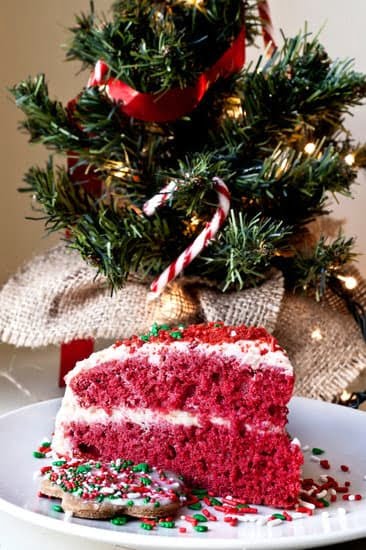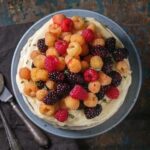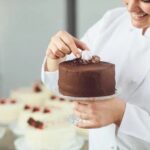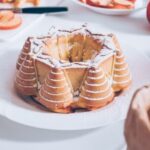Are you interested in learning how to decorate a cake? Decorating a cake is not only an art form but also a way to add a personal touch and creativity to your baked creations. Whether you are celebrating a special occasion or simply want to indulge in some sweet and colorful treats, knowing how to decorate a cake can elevate the overall experience of enjoying desserts.
Cake decorating allows for endless possibilities and creativity, from simple designs to more intricate and elaborate ones. In this article, we will explore the essential tools and ingredients needed for cake decorating, as well as provide a step-by-step guide on how to prepare the cake for decorating. Additionally, we will share design inspiration, techniques for frosting and icing, using piping and fondant, adding edible decorations, and troubleshooting common cake decorating mistakes.
If you’ve ever wanted to learn the secrets of creating visually stunning cakes that not only taste delicious but also look impressive, then mastering the art of cake decorating is essential. So let’s dive into the world of cake decorating and discover the tips and tricks for perfecting your skills in this creative culinary endeavor.
Essential Tools and Ingredients for Cake Decorating
When it comes to cake decorating, having the right tools and ingredients can make a world of difference in the final result. Whether you’re a beginner or an experienced baker, there are certain essential items that every cake decorator should have in their arsenal.
One of the most important tools for cake decorating is a good offset spatula, which is crucial for spreading frosting and smoothing it out. Piping bags and tips are also essential for creating intricate designs and borders on your cakes. Additionally, having a turntable makes it much easier to frost and decorate a cake evenly.
In terms of ingredients, high-quality butter, confectioners’ sugar, and pure vanilla extract are must-haves for making delicious frosting. Gel food coloring allows you to achieve vibrant colors without altering the consistency of your icing. And if you’re planning on using fondant, make sure to have a rolling pin and cornstarch on hand to prevent sticking.
Lastly, investing in a few specialty tools such as edible luster dust or edible glitter can take your cake decorating to the next level. With the right tools and ingredients at your disposal, you’ll be well-equipped to create beautiful and professional-looking cakes at home.
Step-by-Step Guide
Before you can start decorating a cake, it’s important to ensure that the cake itself is properly prepared. This means leveling the cake layers, applying a crumb coat, and ensuring that the surface is smooth and ready for decorations.
The first step in preparing a cake for decorating is leveling the layers. Using a long serrated knife or a cake leveler, carefully trim off any domed tops to create an even surface. This will make it easier to stack multiple layers and prevent your cake from looking lopsided once decorated.
Next, apply a crumb coat to the cake. A crumb coat is a thin layer of frosting that seals in any loose crumbs before applying the final layer of frosting or icing. This helps to create a clean and smooth surface for decorating. Once the crumb coat is applied, chill the cake in the refrigerator for about 30 minutes to allow the frosting to set.
Finally, before moving on to decorating your cake with frosting or icing, make sure that the surface of the cake is smooth. Use an offset spatula or bench scraper to evenly spread and smooth out your frosting or icing on the sides and top of the cake.
| Tools | Usage |
|---|---|
| Cake leveler or serrated knife | To even out the top of each layer |
| Offset spatula | To spread frosting evenly |
| Bench scraper | To smooth out frosting on the sides of the cake |
| Piping bags and tips (for intricate designs) | To add detailed decorations with precision |
Design Inspiration
With so many cake decorating ideas out there, it can be overwhelming to choose a design for your cake. Whether you’re a beginner or an experienced baker, finding inspiration for creative cake designs can help take your baking to the next level. From simple and elegant designs to whimsical and fun creations, there are endless possibilities when it comes to decorating a cake.
Theme-Based Designs
One way to come up with creative cake decorating ideas is to consider a specific theme for your cake. Whether it’s a birthday, wedding, baby shower, or holiday celebration, incorporating a theme into your design can help guide your decorating choices. For example, for a beach-themed party, you might consider using blue ombre frosting to mimic the ocean waves and edible seashells as decorations.
Geometric Patterns
Geometric patterns are becoming increasingly popular in cake decorating. Whether it’s creating intricate hexagon shapes with fondant or using piping techniques to make symmetrical designs, geometric patterns can add a modern and stylish touch to your cake.
Nature-Inspired Decorations
Drawing inspiration from nature can lead to some stunning cake designs. From floral arrangements made of edible flowers to recreating a woodland scene with fondant animals and trees, there are endless possibilities for incorporating natural elements into your cake decorating.
By exploring different themes, patterns, and natural inspirations, you can come up with countless creative ideas for decorating a cake. Experimenting with various designs will not only help you improve your skills but also provide endless opportunities for expressing creativity through baking.
Techniques for Frosting and Icing a Cake
Once you have prepared your cake for decorating, the next step is to frost and ice it. This is where you can really let your creativity shine and make your cake look as beautiful as it tastes. Here are some techniques for frosting and icing a cake:
1. Crumb Coat: Before applying the final layer of frosting, it’s important to create a crumb coat. This thin layer of frosting seals in any loose crumbs on the cake, preventing them from showing through the final coat. Use a straight spatula to apply a thin layer of frosting all over the cake, then chill it in the refrigerator for about 15 minutes before applying the final coat.
2. Smooth Finish: To achieve a smooth finish on your frosted cake, use a bench scraper or offset spatula to spread an even layer of frosting around the sides and top. Once the entire cake is covered, use the edge of the scraper or spatula to smooth out any imperfections.
3. Textured Techniques: If you want to add texture or decorative elements to your frosted cake, consider using different techniques such as feathering, combing, or stippling. These methods can add visual interest and unique design elements to your cake.
4. Ombre Effect: To create an ombre effect on your frosted cake, start with a base color and gradually blend in lighter shades as you move up the sides of the cake. Use an offset spatula or piping bag to blend the colors seamlessly for a stunning gradient effect.
Now that you know how to decorate a cake with frosting and icing, you can experiment with different textures, designs, and color schemes to create a visually striking masterpiece for any occasion.
Using Piping and Fondant
Piping and fondant are two essential elements for creating intricate and beautiful cake designs. Whether you’re a beginner or an experienced baker, mastering these techniques can take your cake decorating skills to the next level. Here are some tips for using piping and fondant to create stunning designs on your cakes.
When it comes to piping, it’s important to use the right tip for the design you have in mind. Large tips are perfect for creating bold borders or writing, while smaller tips are great for intricate details and delicate designs. Practice with different tips and icing consistencies to find the best combination for your desired effect.
Fondant is a versatile medium that can be shaped, molded, and draped over cakes to create smooth, flawless finishes. To work with fondant, make sure to knead it until it’s soft and pliable, then roll it out to the desired thickness using a powdered sugar-dusted surface. Use fondant tools or even simple household items like cookie cutters and toothpicks to create various shapes and textures.
To avoid any mishaps while using piping and fondant, it’s important to work with a steady hand and keep your workspace clean and organized. Take your time when piping intricate designs or working with fondant to ensure precision and attention to detail. Remember that practice makes perfect when it comes to mastering these techniques, so don’t be discouraged if your first attempts aren’t flawless – keep experimenting and refining your skills.
By utilizing these tips for using piping and fondant in your cake decorating process, you can create stunning, professional-looking designs that will impress any crowd. Whether you’re making a birthday cake for a loved one or creating a show-stopping dessert for a special occasion, these techniques will elevate your cakes from delicious treats to works of edible art.
Adding Edible Decorations
One of the most enjoyable parts of cake decorating is adding edible decorations to your masterpiece. Not only do these decorations enhance the visual appeal of the cake, but they also add delicious flavors and textures. Whether you are adding fresh fruit, chocolate ganache, or other edible decorations, there are a few tips and tricks to keep in mind.
When it comes to using fresh fruit as a cake decoration, it’s important to choose fruits that are in season and at their peak ripeness. This will ensure that they not only look beautiful on the cake but also taste delicious.
Some popular choices for decorating with fresh fruit include berries, sliced citrus fruits, and tropical fruits like kiwi and mango. To prevent the fruit from wilting or turning brown, it’s best to brush them with a light glaze made from apricot jam or simple syrup.
For those looking to add an extra touch of indulgence to their cakes, chocolate ganache is a fabulous option. Made from just two simple ingredients – cream and chocolate – ganache can be drizzled over the top of the cake for a glossy finish, used between layers for added richness, or piped into intricate designs.
Dark chocolate ganache pairs well with rich flavors like red velvet or dark chocolate cakes, while white chocolate ganache adds sweetness and complements lighter flavors like vanilla or coconut.
In addition to fresh fruit and chocolate ganache, there are endless possibilities for edible cake decorations. From edible flowers and gold leaf to caramelized nuts and flavored whipped cream, experimenting with different decorations can take your cake decorating skills to new heights.
| Edible Decoration | Best Cake Pairing |
|---|---|
| Fresh Fruit | Vanilla or chiffon cakes |
| Chocolate Ganache | Red velvet or dark chocolate cakes |
Troubleshooting
Cracked or Uneven Frosting
One common cake decorating mistake is ending up with a cracked or uneven frosting on the cake. This can happen if the frosting is too thick or if the cake layers are not leveled properly. To fix this issue, you can try using a bench scraper to smooth out the frosting and create an even surface. If the frosting is too thick, try adding a small amount of milk or cream and re-whip it to achieve a smoother consistency.
Bulging Layers
Bulging layers occur when the filling between cake layers starts to ooze out, causing the cake layers to push apart. To prevent this from happening, make sure to level off each layer of the cake before adding the filling. If you notice bulging after assembling the cake, gently press down on the top layer and refrigerate the cake for a while to allow it to set.
Air Bubbles in Fondant
When working with fondant for intricate designs, air bubbles can often form, creating an unsightly appearance. To fix this issue, puncture any visible air bubbles with a needle or pin, then smooth out the surface of the fondant with your hands or a fondant smoother tool. Be sure to roll out your fondant evenly and work methodically across the surface of the cake to minimize air bubbles.
By addressing these common cake decorating mistakes and learning how to fix them, you can ensure that your finished product looks professional and polished. From cracked frosting to bulging layers and air bubbles in fondant, understanding how to troubleshoot these issues will help you perfect your cake decorating skills and create stunning confections every time.
Conclusion
In conclusion, mastering the art of cake decorating can be a rewarding and fulfilling skill to have. With the right tools, ingredients, and techniques, anyone can learn how to decorate a cake like a professional. Whether you are a novice or an experienced baker, there is always room for improvement and new ideas when it comes to cake decorating.
One of the most important tips for perfecting your cake decorating skills is to practice regularly. The more you practice, the more confident you will become in using different techniques and experimenting with unique designs. Additionally, seeking inspiration from various sources such as social media, baking books, or attending workshops can help you expand your creativity and develop your own signature style.
Furthermore, don’t be afraid to make mistakes along the way. Every great baker has encountered their fair share of mishaps and failures before achieving perfection. Embrace these challenges as learning opportunities and use them to improve your skills. Remember that patience and persistence are key when it comes to perfecting the art of cake decorating. With dedication and creativity, you too can create stunning and delicious works of art that will impress all who see – and eat – them.
Frequently Asked Questions
How to Decorate a Cake Easy?
Decorating a cake can be made easy by using simple techniques such as using a frosting bag to pipe designs, adding colorful sprinkles or edible glitter, and using ready-made fondant to create shapes and figures.
What Are the Best Tips for Cake Decorating?
The best tips for cake decorating include ensuring that the cake is completely cooled before decorating, using a turntable to easily frost the cake, experimenting with different piping tips for various designs, and practicing patience when working on intricate decorations.
What Is the Best Thing to Use to Decorate a Cake?
The best thing to use to decorate a cake depends on the desired design and effect. Common options include buttercream frosting for smooth finishes and piping, fondant for creating detailed shapes and figurines, edible markers for drawing directly on the cake, and various types of decorative sprinkles and pearls.

Welcome to our cake decorating blog! My name is Destiny Flores, and I am the proud owner of a cake decorating business named Cake Karma. Our mission is to provide delicious, beautiful cakes for all occasions. We specialize in creating custom cakes that are tailored specifically to each customer’s individual needs and tastes.





